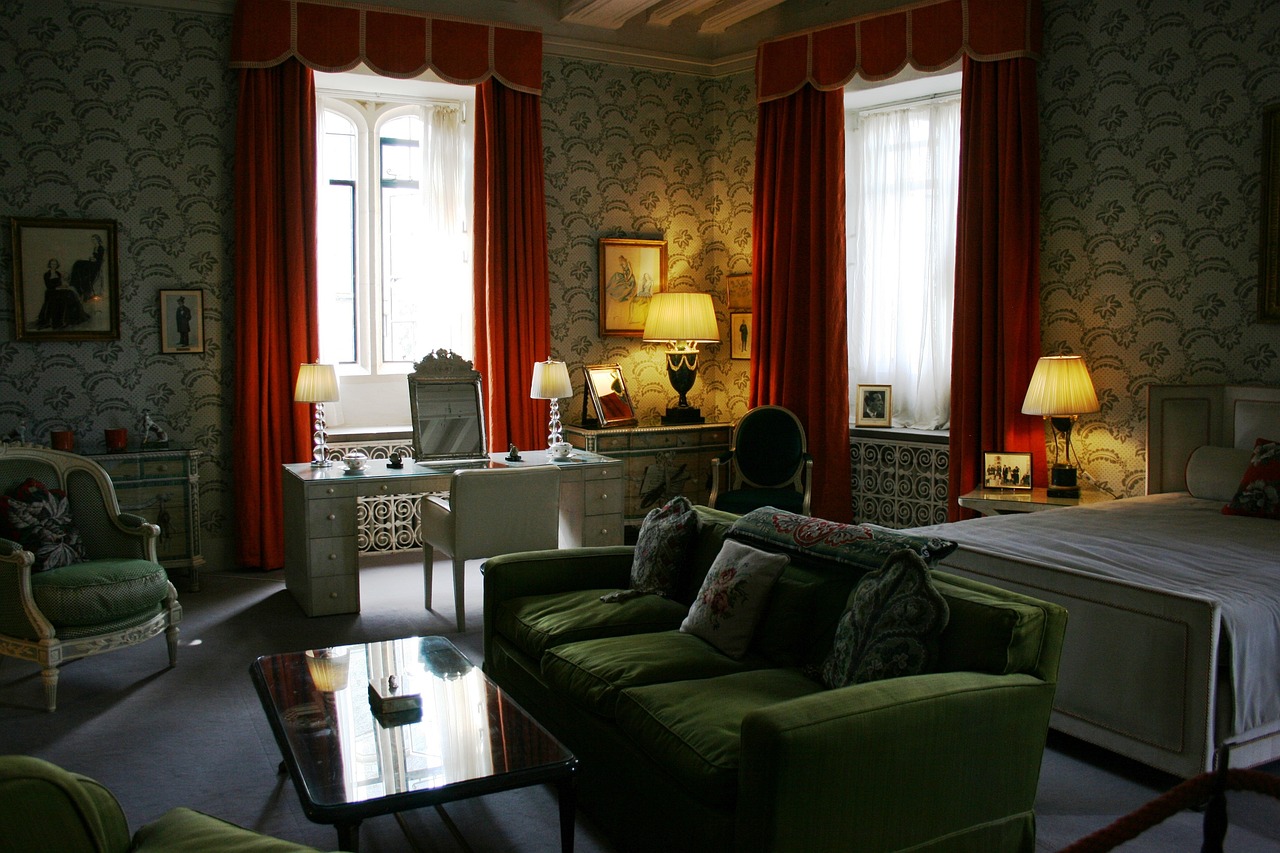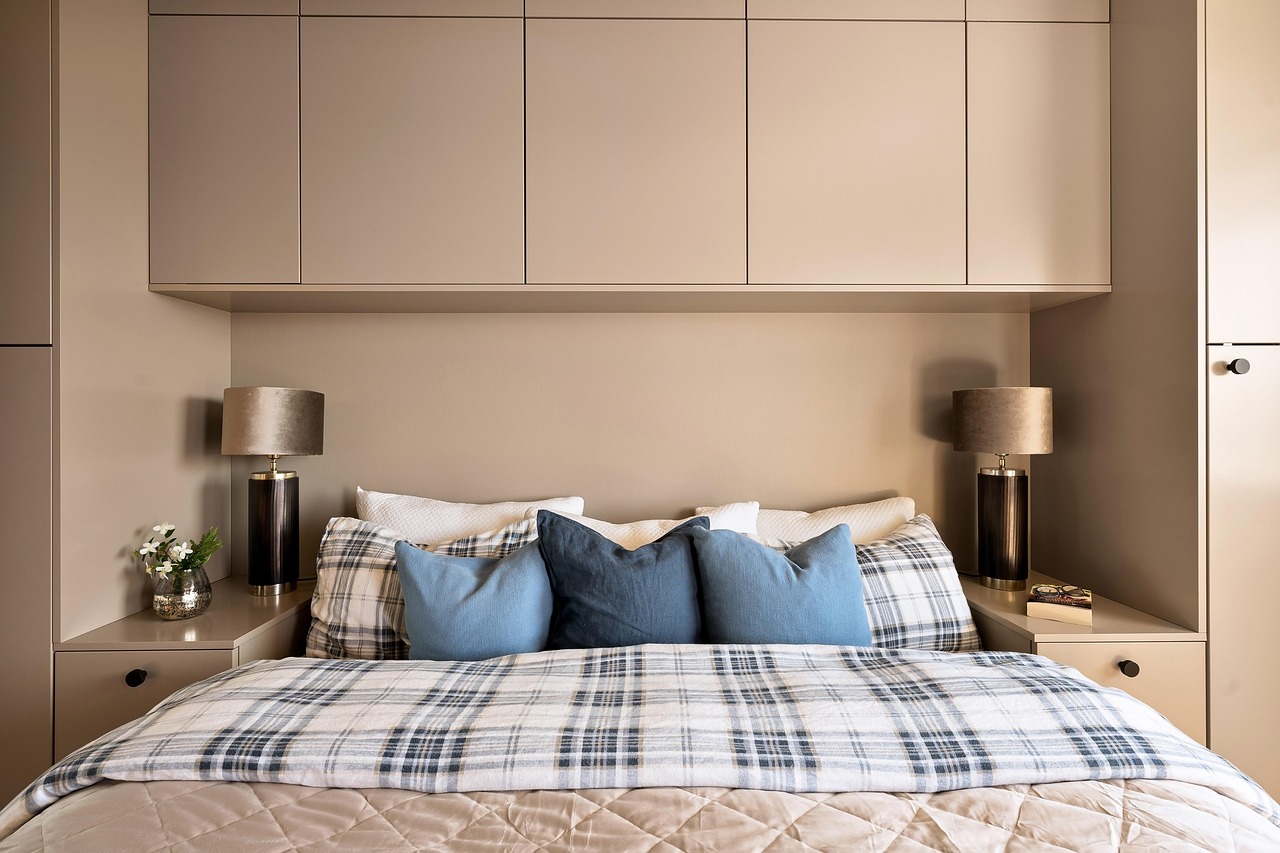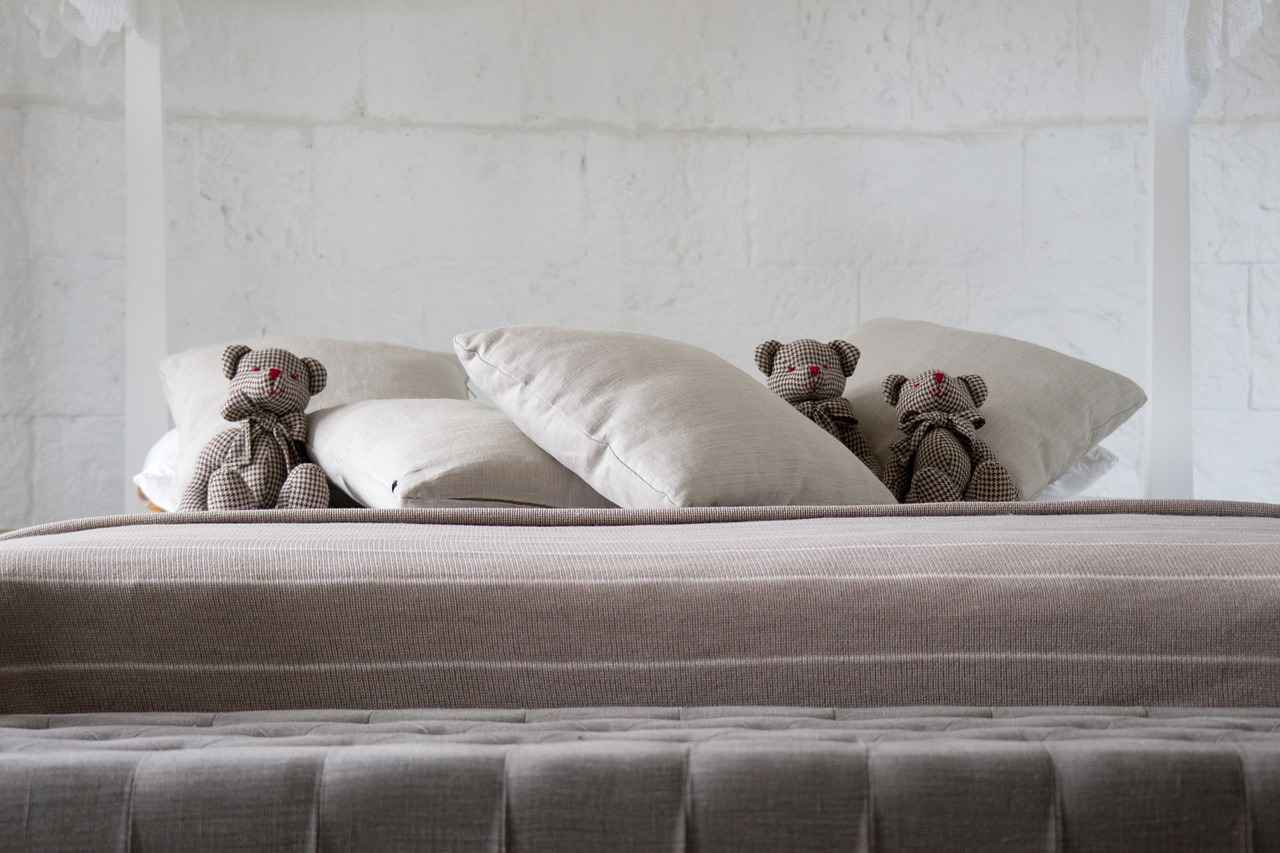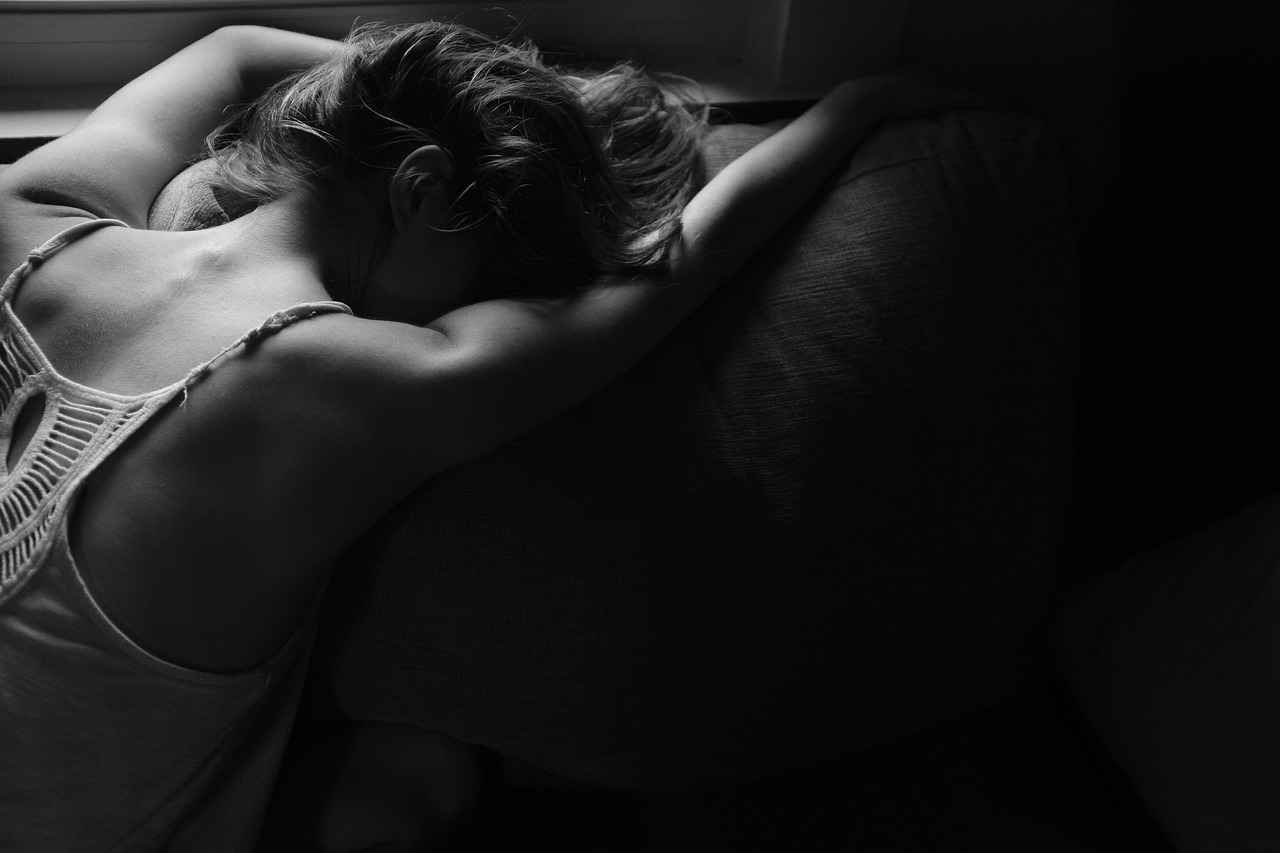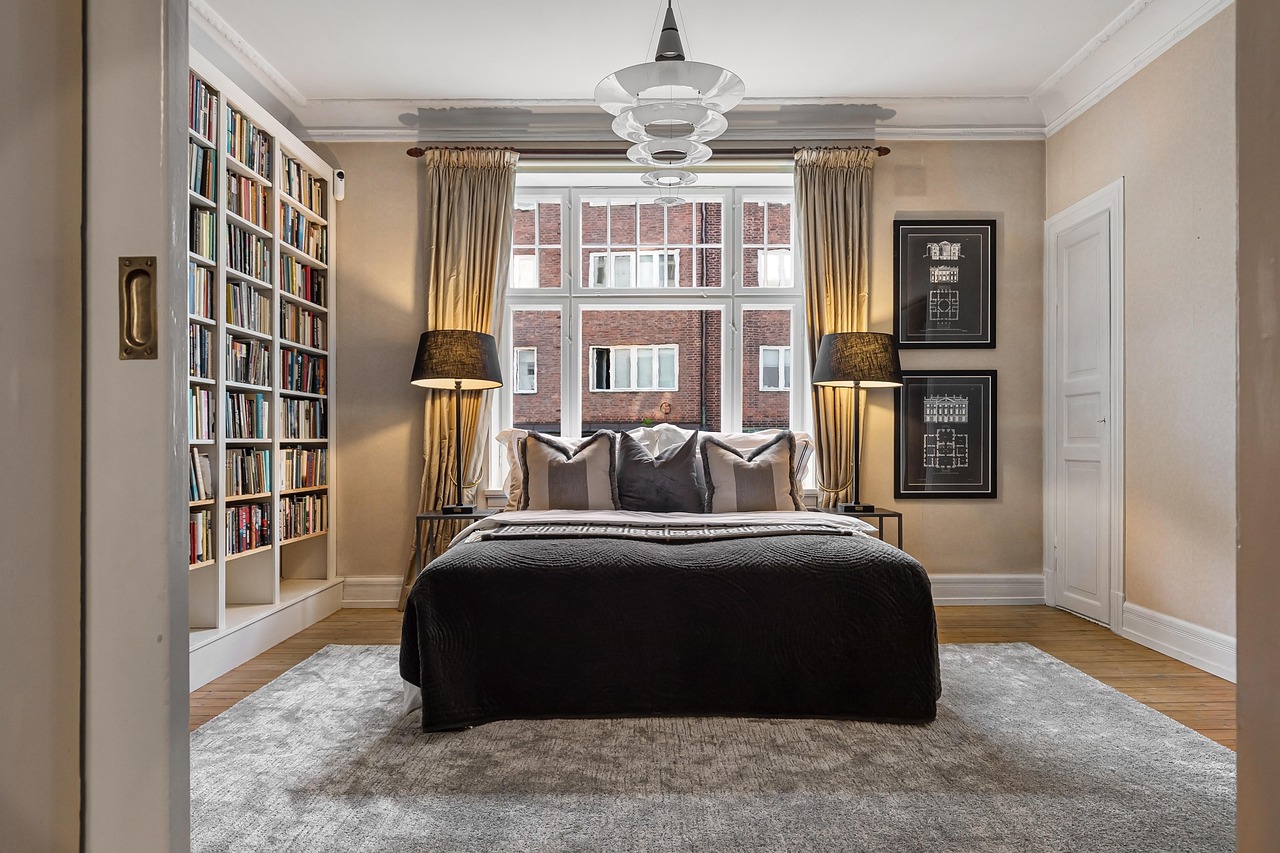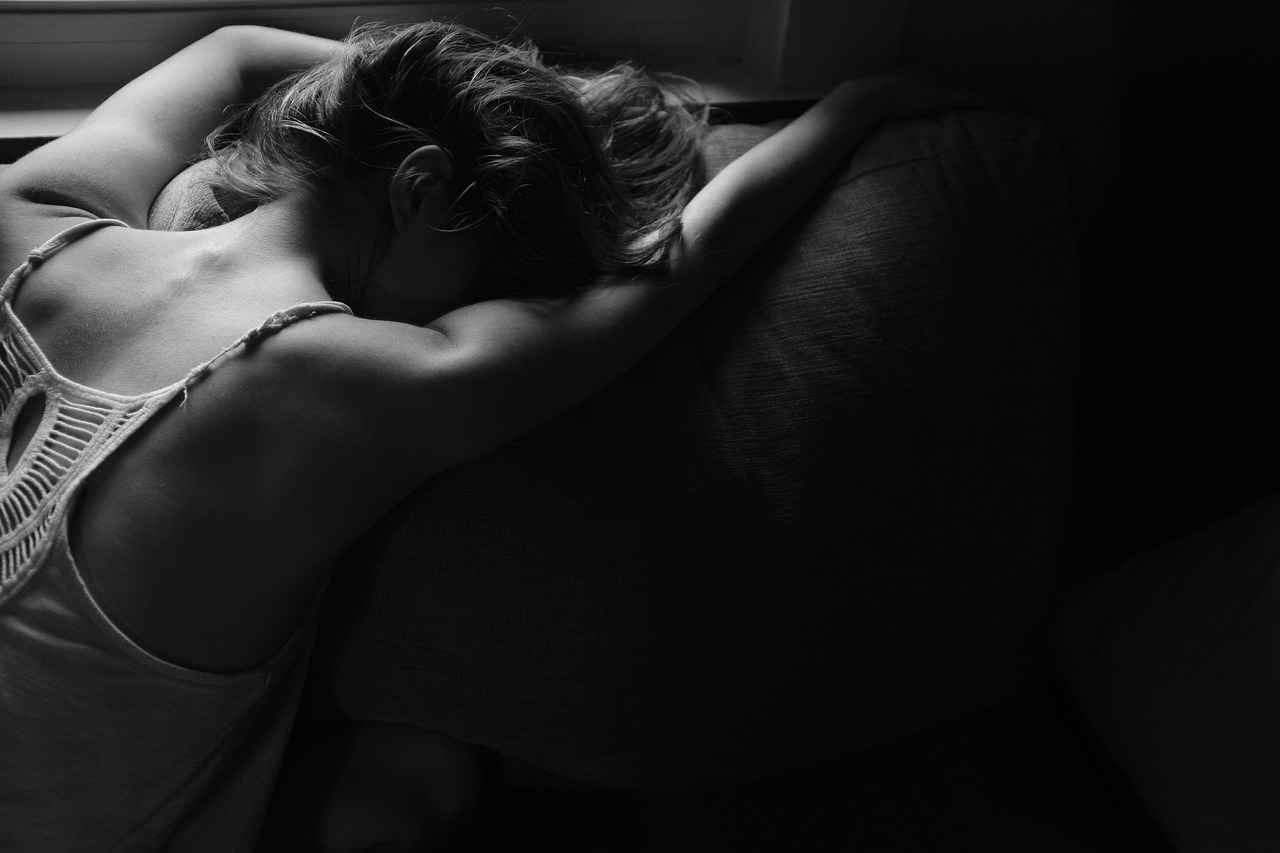Explore the latest trends in minimalist bed designs that seamlessly blend style and functionality. This article delves into various ideas, materials, and inspirations for creating a serene bedroom atmosphere that promotes relaxation and tranquility.
Minimalism is not just a design choice; it’s a lifestyle that emphasizes clarity and simplicity. The principles of minimalist design encourage homeowners to focus on what truly matters, eliminating clutter and distractions. When it comes to bed design, this means opting for pieces that are not only visually appealing but also serve a purpose.
At the heart of minimalist design lies the concept of functional beauty. This principle revolves around creating spaces that are both aesthetically pleasing and practical. In bed design, this translates to clean lines, neutral color palettes, and a focus on essential elements. The goal is to create a peaceful sanctuary where one can unwind and rejuvenate.
Material selection is crucial in achieving the desired minimalist aesthetic. Popular choices include:
- Wood: Offers a natural warmth and timeless appeal.
- Metal: Provides a sleek, modern look that complements minimalist decor.
- Upholstered Options: Adds comfort and texture while maintaining a clean design.
Wooden beds are incredibly versatile, available in various finishes and styles. From light oak to dark walnut, the finish you choose can significantly impact the overall look of your bedroom. For a minimalist design, consider a platform bed that sits low to the ground, enhancing the sense of space.
Different wood finishes can elevate the minimalist aesthetic:
- Matte Finishes: Create a soft, understated look.
- Glossy Finishes: Add a touch of modern elegance.
Platform beds are ideal for a clean, streamlined look, while canopy beds can introduce a sense of coziness without overwhelming the space. Both styles can be adapted to fit a minimalist theme.
Metal beds are perfect for those seeking a contemporary vibe. They can range from industrial designs with raw finishes to polished, modern styles that enhance the minimalist aesthetic.
The color palette is vital in creating a calming atmosphere. Neutral tones such as white, beige, and gray are commonly used in minimalist designs. They can make a space feel larger and more open.
Using neutral colors can evoke a sense of peace and tranquility. Consider using these shades on your walls and bedding to create a cohesive look.
While minimalism favors neutrals, incorporating subtle accent colors can add character. Choose one or two accent colors that resonate with your personal style and use them sparingly to avoid cluttering the space.
In minimalist design, functionality is paramount. Beds with built-in storage solutions can maximize space without sacrificing style. Consider designs that feature:
- Under-Bed Storage: Drawers or compartments that keep your belongings organized.
- Headboards with Shelves: These provide a practical solution for displaying decor while maintaining a clean look.
The right bedding can significantly enhance the overall feel of your minimalist bedroom. Opt for fabrics that are both comfortable and visually appealing, such as linen or cotton.
Incorporating various textures can add depth to your minimalist design. Layering different fabrics can create a cozy and inviting atmosphere.
Layering blankets and throws can provide warmth and style without overwhelming the minimalist aesthetic. Aim for a balanced look that feels inviting.
Lighting is crucial in setting the mood. A combination of natural and artificial light can enhance the beauty of your minimalist bed design.
Maximizing natural light can make your bedroom feel more spacious. Use sheer curtains to allow light while maintaining privacy.
Choosing a statement lighting fixture can serve as a focal point in your bedroom. Look for designs that align with your minimalist aesthetic while adding visual interest.
Staying updated with current trends can inspire your minimalist bed design. Look for innovative ideas that align with your vision, ensuring your bedroom remains a serene retreat.

Understanding Minimalist Design Principles
Minimalist design is a philosophy that prioritizes simplicity and functionality. It strips away the unnecessary, allowing the essential elements to shine. This approach is particularly relevant in the context of bed design, where the goal is to create a serene and uncluttered space that promotes relaxation and rest.- Emphasis on Functionality: At the heart of minimalist design is the idea that every element should serve a purpose. In bed design, this translates to beds that not only look good but also offer practical benefits, such as built-in storage or adjustable features.
- Simplicity in Form: Minimalist beds often feature clean lines and geometric shapes. This simplicity helps to create a calming environment, free from the distractions of ornate details or excessive embellishments.
- Neutral Color Palettes: Minimalist design favors neutral tones, which can evoke a sense of peace and tranquility. Colors like white, gray, and beige are commonly used, allowing the bed to blend seamlessly with the rest of the room.
- Quality Over Quantity: In a minimalist approach, it’s not about having many items but rather investing in a few high-quality pieces. This principle applies to bed materials, where durable woods or high-quality metals are preferred over cheaper alternatives.
When applying these principles to bed design, it’s essential to consider how each element contributes to the overall aesthetic. A minimalist bed might be low-profile, with a simple headboard and a sleek frame that doesn’t overpower the room. Additionally, the use of natural materials can enhance the design, providing warmth and texture without compromising the minimalist ethos.
Moreover, functionality is crucial in minimalist bed design. Innovative features such as under-bed storage or headboards with integrated shelving can maximize space and maintain the uncluttered look that is characteristic of minimalism. These functional elements not only serve practical purposes but also contribute to the overall aesthetic by reducing visual clutter.
Incorporating minimalist design principles into bed design creates a space that is not only visually appealing but also conducive to relaxation and rest. By focusing on simplicity, functionality, and quality, you can create a serene bedroom environment that embodies the essence of minimalist living.
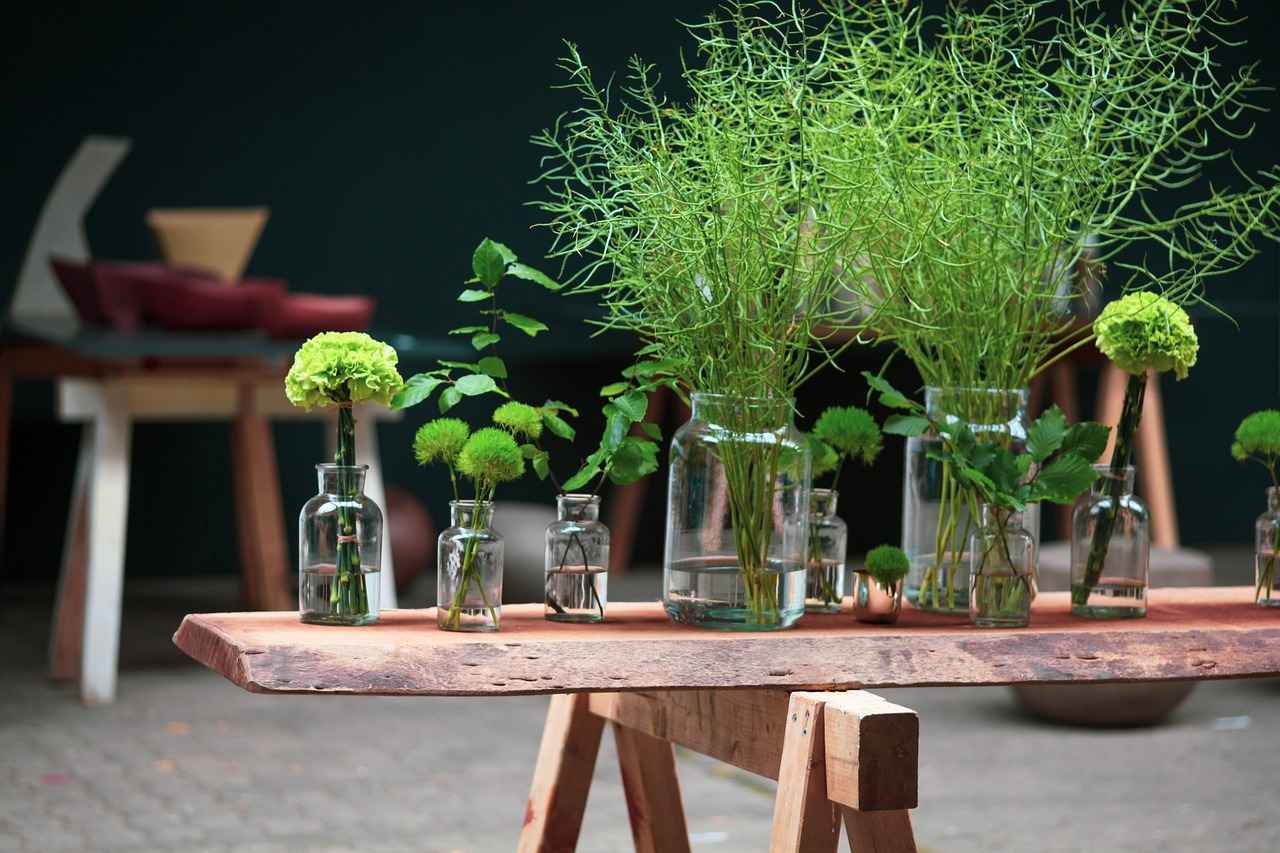
Choosing the Right Materials for Your Bed
Selecting the right materials is crucial for achieving a minimalist aesthetic in your bedroom. The materials you choose not only influence the visual appeal of your bed but also play a significant role in its durability and comfort. This section discusses popular materials such as wood, metal, and upholstered options, emphasizing their benefits and how they contribute to a minimalist design.
Minimalism is all about simplicity, and the materials you select should reflect this principle. Let’s delve into some popular choices:
- Wood: A classic choice, wooden beds bring a sense of warmth and natural beauty to any space. They come in various types, including oak, maple, and walnut, each offering unique grains and colors. Wooden beds can be finished in a variety of ways, from matte to glossy, allowing you to customize the look to fit your minimalist aesthetic.
- Metal: Metal beds are synonymous with a modern and industrial look. They are often lightweight yet sturdy, making them a practical choice for minimalist designs. Options range from sleek, shiny finishes to matte black or white, which can seamlessly integrate into various color schemes. Their clean lines and simple forms make them ideal for a minimalist bedroom.
- Upholstered Beds: For those seeking a touch of comfort without compromising on style, upholstered beds are an excellent choice. They can be covered in various fabrics, including linen, cotton, or velvet, adding texture to the minimalist design. The key is to choose neutral colors that maintain the serene atmosphere typical of minimalist spaces.
When selecting materials, consider the following:
- Durability: Ensure that the materials you choose can withstand everyday use. For instance, hardwoods tend to be more durable than softwoods, while metal frames can last for years with proper care.
- Maintenance: Minimalism often emphasizes low-maintenance living. Choose materials that are easy to clean and maintain their appearance over time. For example, metal frames can be wiped down easily, while upholstered beds may require more upkeep.
- Visual Harmony: Aim for a cohesive look by coordinating your bed materials with other elements in your bedroom. If you have wooden furniture, a wooden bed can create a unified aesthetic. Conversely, if you prefer a mix, consider how different materials can complement each other.
Ultimately, the right materials for your bed should align with your personal style while adhering to the principles of minimalist design. By carefully selecting materials like wood, metal, and upholstery, you can create a bedroom that is not only stylish but also functional and serene.
Consider visiting local showrooms or browsing online to see how different materials look in real-life settings. This can help you visualize how your choices will come together in your own space. Remember, the goal is to create a peaceful retreat that reflects your personality while embracing the simplicity of minimalist design.
Wooden Beds: A Timeless Choice
Wooden beds are not just furniture; they are an embodiment of warmth, nature, and timeless elegance. Their natural aesthetic makes them a perfect fit for minimalist design, where simplicity and functionality reign supreme. This section delves into the various types of wood finishes and styles that enhance the minimalist appeal while ensuring durability and longevity.
When it comes to wooden beds, the finish plays a crucial role in defining their overall look. Here are some popular wood finishes that can elevate the minimalist design:
- Matte Finish: This finish offers a soft, understated look, ideal for achieving a serene atmosphere. It emphasizes the natural grain of the wood without the distraction of shine.
- Glossy Finish: A glossy finish can add a modern touch to wooden beds, reflecting light and creating an illusion of space. This style works beautifully in contemporary minimalist settings.
- Distressed Finish: For those who appreciate a rustic charm, a distressed finish can bring character to a wooden bed. It tells a story and adds a unique touch to the minimalist aesthetic.
- Natural Finish: This finish maintains the wood’s original color and texture, allowing the beauty of the material to shine through. It seamlessly integrates with various design elements.
Wooden beds come in various styles, each offering a distinct vibe to a minimalist bedroom:
- Platform Beds: These beds feature a low-profile design that emphasizes clean lines and simplicity. They often come with built-in storage options, making them functional as well as stylish.
- Canopy Beds: While traditionally more ornate, modern canopy beds can be designed with minimalist principles in mind. They create a cozy nook and add height to the room without overwhelming the space.
Choosing the right style and finish can significantly enhance the overall aesthetic of your bedroom. A well-designed wooden bed not only serves as a focal point but also complements the minimalist ethos by promoting a clutter-free environment.
One of the standout features of wooden beds is their durability. Quality wood, when properly cared for, can last for decades. Here are some tips to maintain the beauty and longevity of your wooden bed:
- Regular Cleaning: Dusting with a soft cloth and avoiding harsh chemicals can keep the finish intact.
- Protecting from Moisture: Using coasters and avoiding spills can prevent water damage, which is crucial for preserving the wood’s integrity.
- Periodic Polishing: Applying a suitable wood polish can enhance the shine and protect against scratches.
In summary, wooden beds are a timeless choice that aligns perfectly with minimalist design principles. Their natural beauty, combined with various finishes and styles, allows for customization that can meet individual preferences while ensuring functionality and durability. By selecting the right wood finish and style, you can create a serene and inviting bedroom atmosphere that reflects your personal taste.
Types of Wood Finishes
When it comes to designing a minimalist bedroom, the choice of wood finish for your bed can significantly influence the overall aesthetic. Wood finishes not only enhance the natural beauty of the material but also contribute to the ambiance of the space. In this section, we will explore various types of wood finishes, detailing their characteristics and how they can complement your minimalist design.
- Matte Finish: A matte finish provides a soft, understated look that is perfect for minimalist designs. This finish absorbs light rather than reflecting it, creating a calm and serene atmosphere. It is ideal for those who prefer a more natural appearance, as it showcases the wood’s grain without any gloss. Matte finishes are also less prone to showing fingerprints and dust, making them a practical choice for everyday use.
- Satin Finish: The satin finish strikes a balance between matte and glossy, offering a subtle sheen that enhances the wood’s color and grain. This finish is versatile and works well in various design settings, providing a soft glow that adds warmth to the bedroom. Satin finishes are easy to clean and maintain, making them suitable for high-traffic areas.
- Glossy Finish: For those seeking a more dramatic effect, a glossy finish can make a bold statement. This finish reflects light, creating a bright and airy feel in the room. Glossy finishes can enhance the richness of darker woods, making them appear more vibrant. However, it’s essential to consider that glossy surfaces may require more maintenance, as they can show scratches and fingerprints more readily.
- Natural Finish: A natural finish preserves the wood’s original color and texture, allowing its inherent beauty to shine through. This finish typically involves minimal treatment, using oils or waxes to protect the wood without altering its appearance. Natural finishes are perfect for those who appreciate the authenticity of wood and want to maintain a raw, organic look in their minimalist bedroom.
- Stained Finish: Staining is a popular option for those looking to customize the color of their wood. Stains can range from light to dark and can enhance the grain patterns of the wood, adding depth and character. This finish allows for greater flexibility in matching your bed with other furniture pieces while still adhering to minimalist principles. However, it’s crucial to select a stain that complements your overall color scheme.
Choosing the right wood finish for your minimalist bed is essential for achieving a cohesive and stylish look. Each finish offers its own unique benefits and aesthetic appeal, allowing you to tailor your space to reflect your personal style. Whether you prefer the subtle elegance of a matte finish or the striking impact of a glossy surface, understanding these options will help you create a serene and inviting bedroom environment.
In conclusion, the finish you select can dramatically alter the feel of your minimalist bedroom. By exploring these various wood finishes, you can make an informed decision that aligns with your design vision and enhances the overall atmosphere of your space.
Design Styles: Platform vs. Canopy
When it comes to creating a minimalist bedroom, the choice of bed design can significantly influence the overall aesthetic and functionality of the space. Two popular styles that embody simplicity and elegance are platform beds and canopy beds. Each style offers a unique vibe, and understanding their differences can help you choose the right one for your serene retreat.
- Platform Beds: These beds are characterized by their low profile and lack of a box spring. Platform beds typically feature a solid or slatted base that supports the mattress directly, making them an excellent choice for a minimalist aesthetic. They often come in various materials, including wood and metal, and their sleek design can create a sense of openness in a room. The simplicity of platform beds allows for versatility in decor, making them easy to pair with various bedding styles.
- Canopy Beds: In contrast, canopy beds introduce a touch of drama and elegance to a minimalist bedroom. These beds are framed with posts at each corner, extending to create a canopy effect, which can be left open or draped with fabric. While they may seem less minimalist due to their structure, when designed with clean lines and neutral colors, canopy beds can enhance the overall design without overwhelming the space. They offer an opportunity to create a cozy nook, perfect for relaxation.
Both styles serve functional purposes beyond aesthetics. For instance, platform beds often come with built-in storage options, such as drawers or under-bed compartments, making them ideal for small spaces. On the other hand, canopy beds can provide a sense of enclosure and intimacy, which can be especially beneficial in larger rooms where you want to create a cozy atmosphere.
In terms of design impact, platform beds tend to have a more modern and streamlined look, while canopy beds can evoke a sense of luxury and traditional elegance. The choice between the two often comes down to personal preference and the specific ambiance you wish to create in your bedroom.
When considering your options, think about the following:
- Space Availability: If you have a smaller room, a platform bed may be the better option due to its lower profile and space-saving features.
- Desired Ambiance: If your goal is to create a romantic or luxurious feel, a canopy bed can provide that dramatic flair.
- Functionality: Consider whether you need additional storage or if you prefer a more open, airy design.
Ultimately, both platform and canopy beds can contribute to a minimalist bedroom’s charm, each bringing its own strengths to the table. By carefully considering your space, style preferences, and functional needs, you can select a bed that not only enhances your bedroom’s design but also aligns with your lifestyle.
Metal Beds: Sleek and Modern
Metal beds have become a staple in modern bedroom design, merging style with functionality. Their sleek appearance and sturdy construction make them a popular choice for those looking to enhance their living spaces. This section delves into various metal bed styles, including industrial and contemporary looks, while also discussing their compatibility with minimalist interiors.
One of the most appealing aspects of metal beds is their versatility. They can seamlessly fit into various design aesthetics, particularly in minimalist spaces where simplicity is key. The clean lines and geometric shapes associated with metal frames create an uncluttered look, making them ideal for modern bedrooms.
- Industrial Style: Characterized by raw materials and a rugged appearance, industrial metal beds often feature exposed welds and a distressed finish. This style works well in lofts or urban settings, where the raw charm of the materials can be showcased.
- Contemporary Style: Contemporary metal beds tend to have a more polished and refined look. With smooth finishes and elegant designs, they can complement a variety of color schemes and decor styles, adding a touch of sophistication to any room.
- Minimalist Compatibility: Metal beds are perfect for minimalist designs due to their ability to maintain a light and airy feel. Their simple structure allows for easy integration with other minimalist elements like neutral color palettes and functional furniture.
When selecting a metal bed, consider the finish and color. Matte black and brushed nickel are popular choices that can enhance the overall aesthetic of a bedroom. These finishes not only add to the visual appeal but also offer durability and resistance to wear and tear.
Another important aspect to consider is the bed’s height and frame design. Low-profile metal beds can create a more spacious feel in smaller rooms, while taller frames can provide additional storage options underneath. This functionality aligns perfectly with the minimalist principle of maximizing space without compromising style.
In addition to their aesthetic appeal, metal beds are also known for their durability. Unlike wooden beds, which can warp or crack over time, metal frames are built to last. This longevity makes them a wise investment, especially for those who prioritize sustainability in their home decor choices.
Furthermore, metal beds are relatively easy to maintain. A simple wipe-down with a damp cloth is often all that is needed to keep them looking new. This low-maintenance quality is particularly appealing for busy individuals who appreciate a stylish yet practical bedroom environment.
In conclusion, metal beds represent a fusion of style and functionality, making them an excellent choice for modern and minimalist bedroom designs. Whether you lean towards the rugged charm of industrial styles or the sleek sophistication of contemporary designs, metal beds can enhance your space while providing the durability and ease of maintenance that modern lifestyles demand.
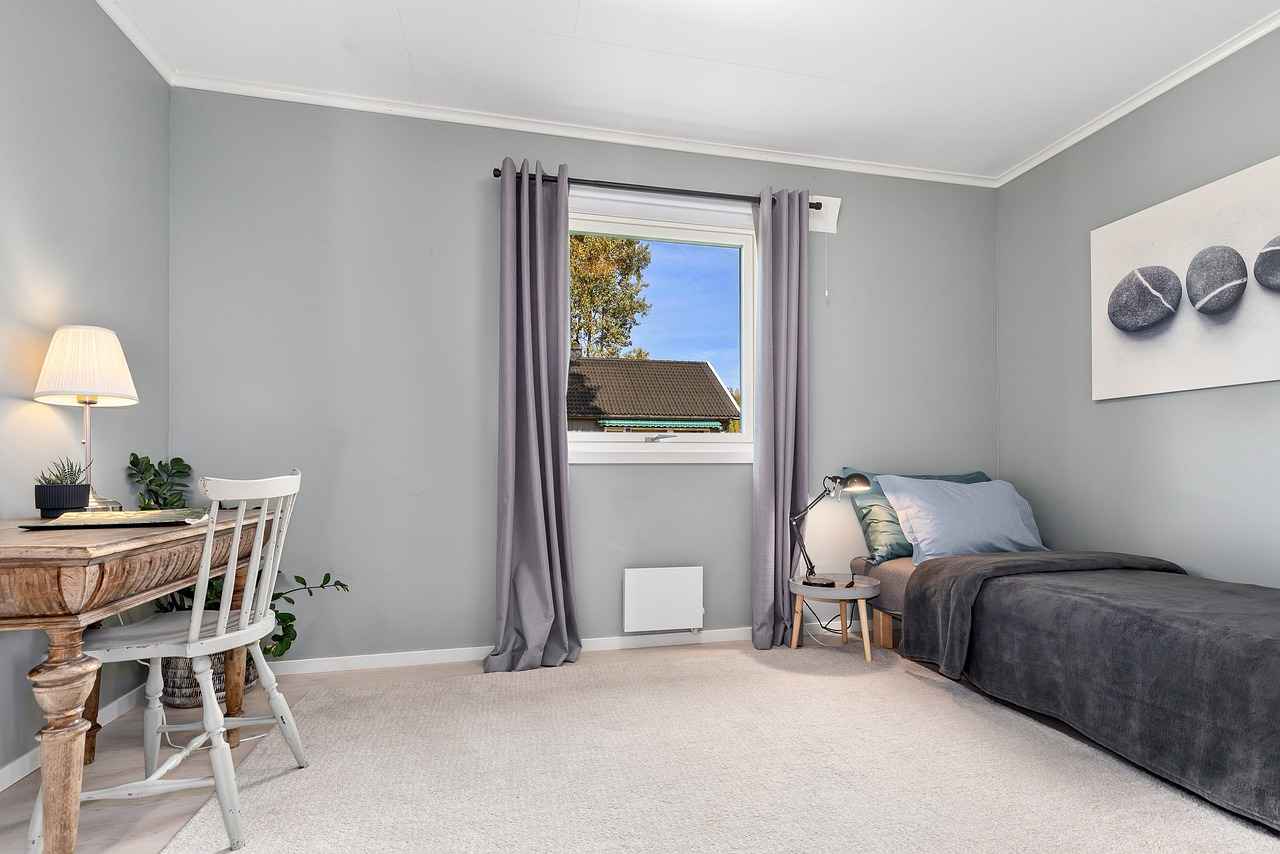
Incorporating Color Schemes in Minimalist Bedrooms
Incorporating color schemes in minimalist bedrooms is essential for creating a harmonious and tranquil environment. The choice of colors can significantly influence the mood and perception of space, making it crucial to select palettes that resonate with the principles of minimalism. This section will explore effective strategies for choosing color schemes that evoke calmness and simplicity, enhancing the overall aesthetic of your bedroom.
Understanding the Role of Color in Minimalism
Color plays a pivotal role in minimalist design by establishing a serene atmosphere. Minimalism thrives on simplicity, and the right colors can reinforce this concept by creating a visually uncluttered space. When selecting colors, consider the psychological effects they have. For instance, cool hues like blues and greens are known for their calming properties, while warm tones such as soft yellows can add a touch of warmth without overwhelming the senses.
Choosing a Neutral Base
Neutral colors form the foundation of a minimalist color palette. Shades like white, beige, and light gray not only create a sense of spaciousness but also serve as a blank canvas for other design elements. These colors can be used on walls, bedding, and furniture to maintain a cohesive look. For example, a soft white wall paired with a beige upholstered bed can create an inviting and peaceful retreat.
- White: Reflects light, making spaces appear larger.
- Beige: Adds warmth without cluttering the visual space.
- Light Gray: Provides a modern touch while remaining understated.
Incorporating Accent Colors
While a neutral palette is essential, incorporating accent colors can introduce personality and depth to the bedroom. These colors should be used sparingly to avoid overwhelming the minimalist aesthetic. Consider using accent colors in decorative pillows, artwork, or a throw blanket. For instance, a deep navy blue or a muted terracotta can provide a striking contrast against a neutral backdrop, adding visual interest without detracting from the overall simplicity.
Color Combinations for a Balanced Look
To achieve a balanced look, consider complementary color combinations. For example, pairing a soft gray with a muted green can create a soothing environment that promotes relaxation. Additionally, using varying shades of the same color can add depth while maintaining a unified appearance. A gradient effect, where darker shades transition to lighter ones, can also enhance the minimalist design by creating a sense of flow and continuity.
| Color | Effect | Usage Tips |
|---|---|---|
| White | Expands space | Use for walls and large furniture |
| Beige | Adds warmth | Incorporate through textiles |
| Light Gray | Modern feel | Mix with darker accents |
| Navy Blue | Creates depth | Use in small doses |
| Muted Terracotta | Adds warmth | Pair with natural materials |
Final Thoughts on Color in Minimalist Bedrooms
Incorporating color schemes into minimalist bedroom designs requires a thoughtful approach. By focusing on neutral tones as a base and strategically adding accent colors, you can create a serene and inviting space that reflects your personal style. Remember to keep the principles of minimalism in mind—simplicity, functionality, and harmony are key. With careful selection and application of colors, your bedroom can become a tranquil sanctuary that promotes rest and relaxation.
Neutral Tones for a Serene Atmosphere
In the realm of minimalist design, the use of neutral tones plays a pivotal role in establishing a calm and inviting atmosphere. Shades such as white, beige, and gray are not just colors; they are essential elements that contribute to a tranquil bedroom environment. This section will delve into how these hues can be effectively integrated into minimalist bed designs, enhancing both style and serenity.
- White: The color white is synonymous with purity and simplicity. It reflects light, making spaces appear larger and more open. In bed design, white can be utilized in various ways, such as in bedding, headboards, or bed frames. A white platform bed, for instance, can serve as a stunning focal point, creating a clean and uncluttered look.
- Beige: This warm, earthy tone adds a touch of coziness to minimalist spaces. Beige can be incorporated through upholstered beds or soft linens, providing a gentle contrast against the starkness of white. This color promotes relaxation and can be paired with various textures to enhance visual interest.
- Gray: A versatile and sophisticated choice, gray can range from light shades to deep charcoal. It works well in minimalist designs by adding depth without overwhelming the senses. Gray bed frames or bedding can create a stylish backdrop that allows other design elements to shine.
When combining these neutral tones, it’s essential to consider the overall color palette of the room. A well-thought-out scheme that incorporates different shades of neutrals can create a layered effect, adding dimension while maintaining the minimalist ethos. For instance, pairing a soft beige bedspread with a light gray wall can evoke a sense of harmony.
In addition to color, texture plays a crucial role in achieving a serene atmosphere. Opting for materials like linen, cotton, or even a subtle velvet can enhance the tactile experience of the bed. These textures not only provide comfort but also contribute to the visual softness of the space.
Lighting is another critical factor that complements neutral tones in minimalist bed designs. Soft, diffused lighting can enhance the calming effects of neutral colors, creating a warm and inviting ambiance. Consider using natural light during the day and warm-toned lamps in the evening to maintain a cohesive and serene environment.
Ultimately, using neutral tones in minimalist bed designs is about finding the right balance. By thoughtfully selecting and combining shades of white, beige, and gray, you can create a peaceful retreat that promotes relaxation and tranquility. Remember, the goal of minimalist design is not only to simplify but also to create a space that feels inviting and restful.
Accent Colors for a Pop of Personality
In the realm of minimalist design, accent colors serve as a powerful tool to breathe life into an otherwise neutral palette. While minimalism often emphasizes simplicity through muted tones, incorporating vibrant hues can transform your bedroom into a personalized sanctuary. This section explores effective strategies for integrating accent colors without compromising the minimalist aesthetic.
One effective way to introduce accent colors is through textiles. Consider using colorful throw pillows, blankets, or a vibrant area rug. These elements can easily be swapped out or changed seasonally, allowing for versatility in your bedroom design. For instance, a deep blue throw can add a touch of sophistication, while a bright yellow pillow can create a cheerful atmosphere. The key is to choose colors that resonate with your personal style while maintaining a harmonious balance.
Another approach is to use wall art or decorative items that feature accent colors. A well-placed piece of artwork can serve as a focal point, drawing the eye and adding depth to the room. Opt for a large canvas or a gallery wall that showcases various pieces in your chosen accent color. This not only enhances the visual interest but also allows you to express your personality without overwhelming the space.
When selecting accent colors, consider the color wheel for guidance. Complementary colors, which are opposite each other on the wheel, can create a striking contrast that enhances the minimalist design. For example, pairing a soft gray bed frame with mustard yellow accents can create a vibrant yet balanced look. Alternatively, analogous colors, which are next to each other on the wheel, can provide a more subtle and cohesive feel.
In addition to textiles and art, you can also incorporate accent colors through furniture choices. A statement chair or a bedside table in a bold color can serve as a unique piece that stands out against a neutral backdrop. This approach allows you to maintain a minimalist design while introducing elements that reflect your taste and style.
When implementing accent colors, it’s crucial to maintain a sense of balance. Too many vibrant hues can clutter the space and detract from the minimalist ethos. Aim for a maximum of three accent colors to ensure a cohesive look. Use these colors strategically, such as in smaller decor items or specific areas of the room, to create a focal point without overwhelming the design.
Finally, consider the lighting in your bedroom, as it plays a significant role in how colors are perceived. Natural light can enhance the vibrancy of your chosen accent colors, while soft, warm lighting can create a cozy atmosphere that complements the minimalist aesthetic. Experiment with different lighting options to see how they affect the overall feel of your space.
In conclusion, incorporating accent colors into a minimalist bedroom can infuse personality and warmth into the design. By thoughtfully selecting textiles, art, furniture, and considering lighting, you can create a harmonious space that reflects your unique style while adhering to the principles of minimalism.

Functional Bed Designs: Storage Solutions
In the realm of minimalist design, the emphasis on functionality is paramount, especially when it comes to bed designs. This section explores a variety of innovative bed designs that seamlessly integrate built-in storage solutions, optimizing space without sacrificing style. By incorporating these designs, you can create a serene and organized bedroom atmosphere that reflects modern living.
One of the most effective ways to enhance storage in a minimalist bedroom is through under-bed storage options. These designs often feature drawers or compartments that are cleverly concealed beneath the bed frame, making them an ideal choice for smaller spaces. Here are some popular under-bed storage solutions:
- Drawers on Rollers: Beds equipped with drawers that glide smoothly on rollers allow for easy access to items stored underneath.
- Lift-Up Bed Frames: These frames provide a hydraulic lift mechanism that reveals a spacious storage area beneath the mattress.
- Storage Boxes: Utilizing decorative storage boxes that fit under the bed can keep items organized while maintaining a clean look.
Another innovative storage solution is the incorporation of headboards with built-in shelves. These multifunctional pieces serve both aesthetic and practical purposes, allowing you to display decorative items or store books and personal belongings. Here are some benefits of choosing a headboard with integrated shelving:
- Space Efficiency: By utilizing vertical space, these headboards help keep nightstands clutter-free.
- Design Versatility: Available in various styles and finishes, they can complement any minimalist bedroom decor.
- Easy Access: Items stored on the headboard are easily reachable, making them convenient for nighttime reading or personal items.
Incorporating built-in nightstands into your bed design can further enhance storage efficiency. These nightstands can be designed as extensions of the bed frame, providing a seamless look while offering additional storage space. Here are some advantages:
- Streamlined Aesthetic: Built-in nightstands create a cohesive look, eliminating the need for separate furniture pieces.
- Customizable Options: You can design the nightstands to include drawers or open shelves, tailored to your specific needs.
For a truly modern touch, consider a floating bed design that incorporates wall-mounted storage solutions. This innovative approach elevates the bed off the ground, creating an airy feel while maximizing floor space. Here are some features of floating beds:
- Wall-Mounted Shelves: These can be installed above the bed, providing easy access to books and decorative items.
- Integrated Lighting: Floating beds often include built-in lighting options, enhancing both functionality and ambiance.
Lastly, consider integrating multi-functional furniture in your bedroom design. Beds that convert into sofas or feature foldable components can significantly enhance the utility of your space. Here’s how they can be beneficial:
- Versatile Use: These pieces can adapt to different needs, making them perfect for guest rooms or studio apartments.
- Space-Saving: By serving multiple purposes, they reduce the need for additional furniture, keeping the room uncluttered.
In conclusion, embracing functional bed designs with built-in storage solutions is essential for achieving a minimalist aesthetic while maintaining practicality. By thoughtfully selecting bed designs that incorporate these features, you can optimize your bedroom space, creating a stylish and serene environment that reflects the principles of minimalist living.
Under-Bed Storage Options
In today’s world where space is often at a premium, under-bed storage has emerged as a clever solution for maximizing the functionality of small bedrooms. This innovative approach not only helps in decluttering but also enhances the overall aesthetic of a minimalist design. By utilizing the space beneath your bed, you can keep your bedroom organized and serene.
There are various designs and styles of under-bed storage that cater to different needs and preferences. Below, we explore some popular options:
- Drawers on Wheels: These are a practical choice, allowing easy access to stored items. They can be pulled out effortlessly, making it simple to retrieve your belongings without having to bend down or reach awkwardly.
- Storage Bins: Clear plastic bins or stylish fabric containers can be placed under the bed. They are perfect for storing seasonal clothing, extra bedding, or even shoes. Their versatility makes them ideal for various storage needs.
- Built-in Drawers: Some bed frames come with built-in drawers that seamlessly blend into the design. This option not only saves space but also maintains the minimalist aesthetic, as the storage is hidden from view.
- Trundle Beds: A trundle bed serves a dual purpose. It can be used as an extra sleeping space for guests while providing storage underneath. This is especially useful in small rooms where every inch counts.
- Lift-up Storage Beds: These beds feature a mechanism that allows the mattress to lift up, revealing a spacious storage area underneath. This is perfect for larger items that need to be stored away, such as blankets or luggage.
When selecting under-bed storage solutions, consider the following factors:
- Size: Ensure that the storage options fit comfortably under your bed without protruding. Measure the height and width of the space to choose the right containers.
- Accessibility: Opt for storage that you can easily access. If you need to reach items frequently, drawers on wheels or lift-up beds may be more convenient.
- Style: Choose storage solutions that complement your bedroom decor. A cohesive look enhances the minimalist aesthetic, making the space feel more organized and inviting.
Incorporating under-bed storage not only optimizes space but also contributes to a more functional and stylish bedroom environment. By selecting the right storage solutions, you can keep your belongings organized while maintaining the serene and uncluttered feel that is essential in minimalist design.
Ultimately, under-bed storage options are a vital aspect of modern bedroom design. They provide an efficient way to utilize every inch of space while aligning with the principles of minimalism. By embracing these innovative solutions, you can create a harmonious and functional living space that meets all your needs.
Headboards with Built-in Shelves
Headboards with built-in shelves are an innovative solution for those seeking to combine style and functionality in their bedroom. These designs not only serve as a striking visual element but also provide practical storage options, making them an ideal choice for minimalist aesthetics.
One of the primary advantages of headboards with integrated shelving is their ability to maximize space. In smaller bedrooms, where every inch counts, these headboards allow you to display decorative items, books, or personal mementos without requiring additional furniture. This clever design helps maintain a clean and uncluttered look, which is essential in minimalist design.
There are various styles of headboards with built-in shelves, each offering unique features:
- Floating Shelves: These headboards often feature shelves that appear to float, creating an airy feel. They are perfect for showcasing plants, artwork, or books, adding a personal touch to the room.
- Box Shelves: Box-style headboards provide a more structured look with enclosed shelving. They can be used to store items out of sight while still allowing for decorative displays on top.
- Integrated Lighting: Some headboards come with built-in lighting, which can highlight your displayed items and create a cozy atmosphere. This feature is particularly useful for reading in bed or adding ambiance to the room.
When selecting a headboard with built-in shelves, consider the following factors:
- Material: Choose materials that complement your existing decor. Wood provides warmth, while metal offers a sleek, modern look. Upholstered options can add softness and texture.
- Size: Ensure the headboard is proportional to your bed and room size. A large headboard can dominate a small space, while a too-small design may not provide adequate functionality.
- Style: Consider the overall theme of your bedroom. Whether you prefer rustic, contemporary, or industrial styles, there are headboards with shelves that can fit seamlessly into your design.
In terms of decoration, the shelves on your headboard can be styled in various ways. Here are some ideas:
- Use a mix of books and decorative objects to create visual interest.- Incorporate plants for a touch of nature and freshness.- Add framed photos or artwork to personalize the space.- Use baskets or boxes to store smaller items, keeping the area tidy.
In conclusion, headboards with built-in shelves are a versatile and stylish addition to any minimalist bedroom. They not only enhance the aesthetic appeal of the space but also offer practical solutions for storage and display. By carefully selecting the right design, material, and decor, you can create a serene and organized environment that reflects your personal style.

Creating a Cozy Atmosphere with Bedding
When designing a minimalist bedroom, the choice of bedding plays a crucial role in establishing a cozy and inviting atmosphere. The right bedding not only enhances the visual appeal of your bed but also contributes significantly to your overall comfort. In this section, we will explore how to select bedding that complements your bed design while creating a serene and relaxing environment.
Textures can add depth and warmth to a minimalist bedroom, which is essential for achieving a cozy feel. Opting for fabrics like linen, cotton, or jersey can enhance comfort while maintaining a clean aesthetic. Linen, for instance, is known for its breathability and natural texture, making it perfect for warmer months. Cotton, on the other hand, offers softness and durability, ensuring that your bedding withstands frequent use.
- Linen: Breathable and textured, ideal for a relaxed look.
- Cotton: Soft, durable, and available in various styles.
- Jersey: Stretchy and cozy, perfect for a snug fit.
Layering your bedding is an effective way to create a cozy atmosphere without sacrificing the minimalist aesthetic. Start with a simple base layer, such as a fitted sheet and a flat sheet, then add a lightweight blanket or duvet. Consider incorporating throws or decorative pillows to introduce additional colors and textures. However, it’s essential to keep layering subtle to avoid overwhelming the minimalist design.
Layering Steps:1. Fitted Sheet2. Flat Sheet3. Lightweight Blanket or Duvet4. Decorative Throw5. Minimalist Pillows
Choosing the right colors for your bedding is vital in enhancing the overall feel of your minimalist bedroom. Neutral tones such as whites, beiges, and grays can create a serene backdrop, allowing for a peaceful retreat. If you wish to introduce a splash of color, consider using soft pastels or muted tones that align with the minimalist theme. This approach can add personality without disrupting the calming effect of the space.
In a minimalist bedroom, simplicity is key. Choose bedding with simple patterns or solid colors to maintain a clean aesthetic. Avoid overly busy designs that can detract from the serene atmosphere. Additionally, ensure that your bedding is well-maintained; regularly washing and ironing your linens can keep them looking fresh and inviting.
When selecting bedding, consider practical aspects such as washability and durability. Opt for materials that are easy to clean and maintain, ensuring that your bedding remains in excellent condition over time. Investing in high-quality bedding can enhance comfort and contribute to the longevity of your minimalist bedroom design.
In conclusion, the right bedding choices can significantly impact the overall ambiance of your minimalist bedroom. By selecting appropriate textures, layering effectively, and maintaining a clean aesthetic, you can create a cozy and inviting space that reflects your style while adhering to minimalist principles.
Choosing Textures for Bedding
In the realm of minimalist design, textures play a pivotal role in creating a harmonious and inviting atmosphere. While the essence of minimalism is rooted in simplicity, incorporating various fabric options can significantly enhance the overall aesthetic and comfort of your bedroom. This section delves into the different textures that can elevate your bedding choices, focusing on materials like linen and cotton, which are renowned for their ability to blend comfort with a clean, modern look.
- Linen: The Breathable Luxury
Linen is a timeless fabric that adds a touch of elegance to any minimalist setting. Known for its breathability and moisture-wicking properties, linen is perfect for maintaining comfort throughout the seasons. Its natural texture brings an organic feel to the bedroom, while its slightly wrinkled appearance adds character, making it an ideal choice for those who appreciate a more relaxed aesthetic.
- Cotton: Versatile and Soft
Cotton is another popular choice in bedding, celebrated for its softness and versatility. Available in various weaves, such as percale and sateen, cotton can cater to different preferences regarding texture and feel. Percale offers a crisp, cool touch, while sateen provides a luxurious sheen and a silky smooth finish. Both options can seamlessly fit into a minimalist design without overwhelming the space.
- Mixing Textures for Depth
While sticking to a minimalist theme, consider mixing different textures to create visual interest. For instance, pairing a smooth cotton duvet with a chunky knit throw can add depth without cluttering the design. This layering technique not only enhances comfort but also invites a sense of warmth and coziness into the bedroom.
- Subtle Patterns for Added Dimension
Incorporating subtle patterns can also enrich the minimalist aesthetic. Textured fabrics like herringbone or geometric prints can provide a sophisticated touch without deviating from the overall simplicity. These patterns can be introduced through decorative pillows or throws, allowing for easy updates to the bedding ensemble.
When selecting bedding textures, it is essential to consider not only the visual appeal but also the practical aspects. Fabrics that are easy to care for and durable will ensure that your minimalist bedroom remains functional and stylish over time. Additionally, opting for sustainable and eco-friendly materials can align with the minimalist philosophy of reducing waste and promoting a more conscious lifestyle.
Ultimately, the right textures will enhance the comfort of your bedding while maintaining the clean lines and simplicity that are hallmarks of minimalist design. By thoughtfully selecting fabrics like linen and cotton, and considering how they can be layered or combined, you can create a serene and inviting bedroom that reflects your personal style.
Layering for Comfort and Style
Layering your bedding is an art that can transform your bedroom into a cozy sanctuary. The technique not only enhances the visual appeal of your space but also adds a level of comfort that is essential for a restful night’s sleep. In this section, we will explore various strategies for layering blankets and throws, ensuring you achieve a stylish yet minimalist look.
- Start with a Solid Foundation: Begin with a quality fitted sheet and a flat sheet. Opt for neutral colors such as white or light gray to maintain a clean aesthetic. These sheets serve as the base layer, ensuring comfort and breathability.
- Add a Comforter or Duvet: Choose a comforter or duvet that complements your color scheme. A lightweight duvet can provide warmth without bulk, while a heavier comforter can add texture. Consider materials like cotton or linen for a breathable option.
- Incorporate Throws: Throws are an excellent way to introduce additional layers. Drape a soft throw across the foot of the bed or over one side for a casual yet intentional look. Look for textures like chunky knit or faux fur to add depth and warmth.
- Mix and Match Patterns: While maintaining a minimalist approach, don’t shy away from mixing subtle patterns. Stripes, dots, or geometric designs can add interest without overwhelming the space. Keep the color palette cohesive to ensure harmony.
- Utilize Pillows Wisely: Pillows are not just for comfort; they also play a significant role in design. Use a combination of different sizes and shapes, such as standard, king, and decorative pillows. Stick to a neutral palette with a few accent colors to keep the look minimalist yet inviting.
- Consider Seasonal Changes: As seasons change, so can your bedding. In winter, opt for heavier fabrics and additional layers, while summer may call for lighter, more breathable materials. This adaptability not only enhances comfort but also keeps your bedroom looking fresh and updated.
When layering your bedding, remember that simplicity is key. Each layer should serve a purpose, whether it’s for warmth, comfort, or aesthetic appeal. By thoughtfully selecting your bedding components, you can create a serene and inviting atmosphere that reflects your personal style.
In conclusion, layering bedding is a simple yet effective way to enhance the comfort and style of your bedroom. By carefully choosing textures, colors, and patterns, you can achieve a look that is both stylish and minimalist. This approach not only elevates the overall design of your space but also creates a cozy retreat where you can unwind and relax.
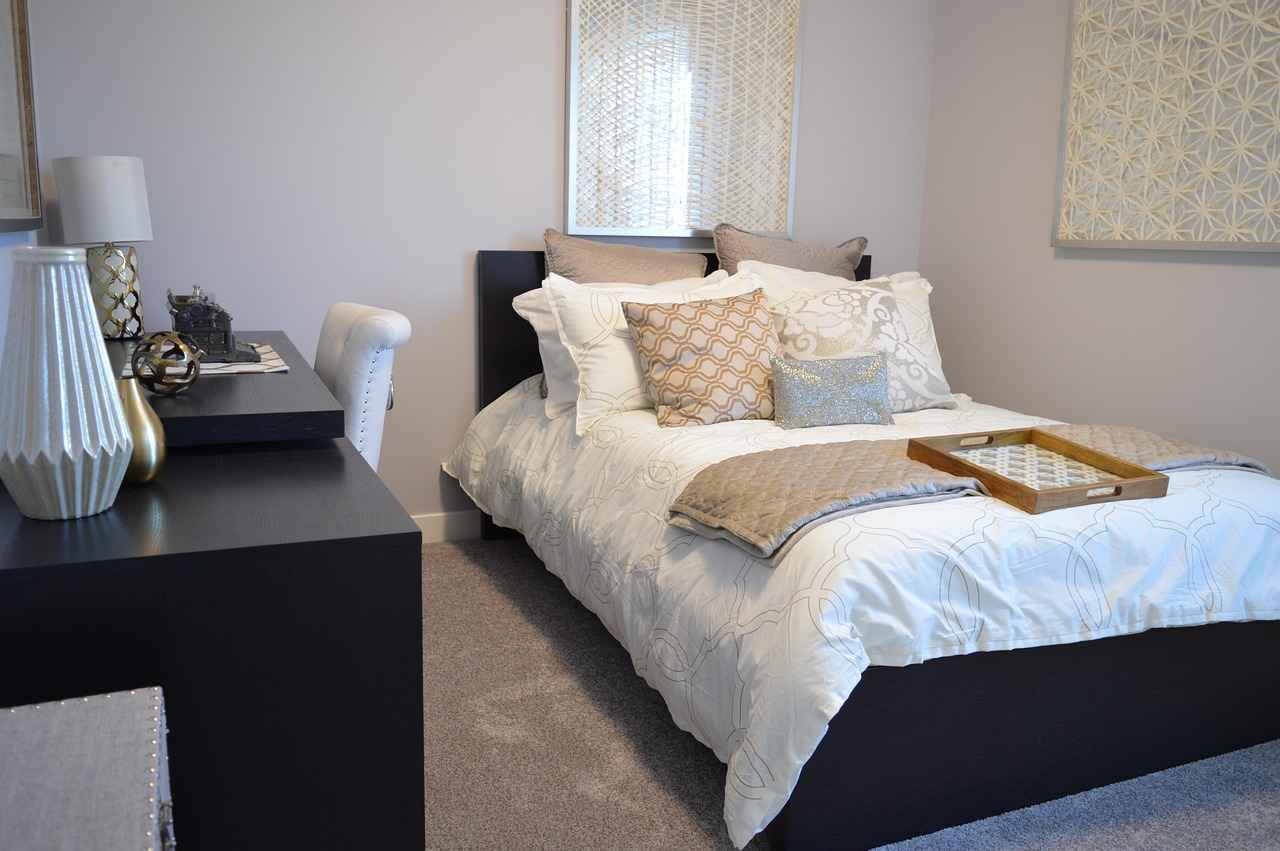
Lighting Considerations for Minimalist Bedrooms
Lighting is not merely a functional element in a minimalist bedroom; it is a crucial component that can significantly influence the overall ambiance and aesthetic appeal of the space. The right lighting can transform a simple design into a serene retreat, enhancing both comfort and style. This section will explore various lighting options that can elevate your minimalist bedroom design.
In minimalist design, layered lighting is essential. This approach combines different types of lighting, including ambient, task, and accent lighting, to create a well-rounded atmosphere. Each layer serves a distinct purpose:
- Ambient Lighting: This is the primary source of light in the room, providing overall illumination. Consider using recessed lighting or flush-mounted ceiling fixtures that blend seamlessly with the minimalist aesthetic.
- Task Lighting: Task lighting is vital for specific activities such as reading or working. Simple table lamps or wall-mounted sconces can offer focused light without overwhelming the space.
- Accent Lighting: This type of lighting highlights architectural features or artwork. Minimalist pendant lights or LED strip lights can create visual interest while maintaining a clean look.
Natural light is a fundamental aspect of any minimalist bedroom. It not only enhances the room’s aesthetic but also promotes a sense of well-being. Here are some tips for maximizing natural light:
- Window Treatments: Opt for sheer curtains or blinds that allow light to filter through while still providing privacy. Avoid heavy drapes that can darken the space.
- Mirror Placement: Strategically placing mirrors can reflect light and create an illusion of more space. Consider positioning a large mirror opposite a window to maximize the effect.
- Light Colors: Use light-colored walls and furnishings to reflect natural light, making the room feel brighter and more open.
When selecting lighting fixtures for a minimalist bedroom, simplicity and functionality should be your guiding principles. Look for designs that are sleek and unobtrusive:
- Flush Mounts and Pendants: These fixtures can provide ample light without taking up too much visual space. Choose designs with clean lines and neutral colors to maintain the minimalist theme.
- Adjustable Fixtures: Consider fixtures that can be adjusted for brightness or direction. Dimmable options allow you to control the mood of the room, making it easy to transition from bright to soft lighting as needed.
- Statement Pieces: While minimalist design favors simplicity, a bold lighting fixture can serve as a focal point. Look for unique designs that complement your overall decor without overwhelming the space.
Incorporating smart lighting technology can enhance the functionality of your minimalist bedroom. Smart bulbs and systems allow you to control the lighting through your smartphone or voice commands. This flexibility enables you to:
- Set Schedules: Program your lights to turn on and off at specific times, mimicking natural light patterns.
- Adjust Brightness: Easily change the brightness to suit your mood or activity, from bright light for reading to soft light for relaxation.
- Create Scenes: Set different lighting scenes for various activities, such as a warm glow for winding down or bright light for morning routines.
In summary, lighting is a pivotal element in creating a cohesive and inviting minimalist bedroom. By understanding the importance of layered lighting, maximizing natural light, choosing the right fixtures, and incorporating smart solutions, you can enhance the overall design of your space. Thoughtful lighting choices not only elevate the aesthetic but also contribute to a tranquil and harmonious environment.
Natural Light vs. Artificial Light
When designing a serene bedroom, the balance between natural and artificial light is crucial. This section delves into effective strategies that maximize the benefits of both light sources, creating an inviting and tranquil atmosphere.
Natural light has numerous advantages, including its ability to enhance mood and promote a sense of well-being. To maximize natural light in your bedroom, consider the following strategies:
- Use Large Windows: Incorporating large windows or glass doors can flood your space with sunlight. Opt for floor-to-ceiling windows if possible, as they not only provide ample light but also create a seamless connection with the outdoors.
- Choose Light Colors: Light-colored walls and furnishings reflect sunlight, making the room feel brighter and more open. Shades of white, cream, and soft pastels can enhance the natural light entering the space.
- Keep Windows Unobstructed: Avoid heavy drapes or cluttered window sills that can block sunlight. Instead, consider sheer curtains that allow light to filter through while maintaining privacy.
While natural light is invaluable, effective artificial lighting is equally important, especially for evenings and cloudy days. Here are some tips for integrating artificial lighting:
- Layered Lighting: Incorporate a mix of ambient, task, and accent lighting. Use ceiling fixtures for overall illumination, bedside lamps for reading, and wall sconces or LED strips to highlight architectural features.
- Smart Lighting Solutions: Consider smart bulbs that can adjust brightness and color temperature. This flexibility allows you to create a cozy atmosphere in the evening and energizing light during the day.
- Statement Fixtures: A unique pendant light or chandelier can serve as a focal point in the room. Choose designs that complement your minimalist aesthetic while adding character.
Combining natural and artificial light effectively can transform your bedroom into a peaceful retreat. By maximizing natural light and implementing thoughtful artificial lighting solutions, you can create a balanced environment that promotes relaxation and well-being.
Ultimately, the goal is to create a harmonious interplay between these two light sources, ensuring that your bedroom remains a sanctuary of calm and tranquility throughout the day and night.
Statement Lighting Fixtures
In the world of minimalist design, every element counts, and lighting is no exception. can transform a simple space into a visually stunning environment, serving as both a functional necessity and a striking focal point. This section explores how to select lighting that not only complements your bed design but also elevates the overall aesthetic of your bedroom.
When choosing statement lighting, consider the following key aspects:
- Style Compatibility: Ensure that the lighting fixture aligns with the overall style of your bed and room. For instance, a sleek, modern pendant lamp may perfectly complement a contemporary platform bed, while a vintage chandelier might enhance the charm of a rustic wooden bed.
- Scale and Proportion: The size of the lighting fixture should be proportional to the space. A large, bold fixture can make a statement in a spacious room, while smaller fixtures may be more suitable for compact spaces.
- Functionality: Beyond aesthetics, consider how the lighting will be used. Adjustable fixtures or those with dimming capabilities can provide versatility, allowing you to create different moods throughout the day.
Additionally, the choice of materials and finishes can significantly impact the visual interest of your lighting. For example:
| Material | Visual Effect |
|---|---|
| Glass | Creates a sense of openness and lightness. |
| Metal | Adds a sleek, modern touch, often with a reflective quality. |
| Wood | Brings warmth and texture, enhancing a cozy atmosphere. |
Moreover, the placement of your lighting fixtures is crucial. Consider installing fixtures at varying heights or in unexpected locations to draw the eye and create a dynamic visual flow in the room. For instance, a pendant light hung low over a bedside table can create an intimate reading nook, while wall sconces flanking the bed can provide soft, ambient lighting.
Don’t overlook the impact of color temperature in your lighting choices. Warmer tones (around 2700K to 3000K) can create a cozy and inviting atmosphere, perfect for a bedroom setting. On the other hand, cooler tones (above 4000K) can lend a more clinical or energizing feel, which may be desirable in a workspace but not in a relaxation area.
Finally, consider incorporating smart lighting solutions that allow you to control the ambiance with ease. Smart bulbs can change colors, adjust brightness, and even sync with your daily routines, making them a practical addition to any minimalist bedroom.
In summary, statement lighting fixtures are a powerful tool in minimalist design. By carefully selecting and positioning lighting that complements your bed design, you can enhance the visual interest and overall atmosphere of your bedroom. Remember to balance style with functionality, ensuring that your lighting not only looks good but also serves your needs effectively.

Inspiration from Modern Bedroom Trends
Staying updated with current trends can significantly inspire your minimalist bed design. The world of interior design is constantly evolving, and incorporating modern bedroom trends can breathe new life into your space while adhering to minimalist principles. This section highlights popular trends that not only enhance aesthetics but also promote functionality and tranquility in your bedroom.
- Scandinavian Influence: The Scandinavian design trend emphasizes simplicity, functionality, and natural elements. Incorporating light woods, soft textures, and neutral color palettes can create a serene atmosphere. A Scandinavian-style bed often features clean lines and minimal ornamentation, making it an ideal choice for a minimalist bedroom.
- Biophilic Design: Integrating nature into your bedroom design is a growing trend that aligns perfectly with minimalism. Consider a bed frame made from sustainable materials or adding plants around your bed area. This not only enhances the aesthetic but also promotes a sense of calm and well-being.
- Smart Beds: Technology is increasingly making its way into bedroom design. Smart beds that adjust firmness and temperature can enhance comfort while maintaining a sleek appearance. These beds often come with built-in storage solutions, which align with minimalist principles of functionality and space optimization.
- Monochromatic Color Schemes: A monochromatic approach to color can create a cohesive and sophisticated look. Using varying shades of a single color for your bedding and decor can add depth without overwhelming the space. This trend emphasizes the minimalist ethos of simplicity while allowing for personal expression.
- Textured Fabrics: While minimalism often favors smooth surfaces, incorporating textured fabrics can add warmth and interest. Consider bedding made from linen or cotton that provides comfort without compromising the minimalist aesthetic. Layering different textures can create a cozy yet streamlined look.
In addition to these trends, it’s essential to consider the overall layout of your bedroom. Open spaces with minimal furniture can create a sense of tranquility. Opt for a low-profile bed that doesn’t dominate the room, allowing for an airy feel. Furthermore, using multifunctional furniture can help maintain a clutter-free environment, essential for a minimalist design.
When embracing modern bedroom trends, remember that the goal is to create a space that reflects your personality while adhering to minimalist principles. Each trend can be adapted to fit your style, ensuring that your bedroom remains a peaceful retreat.
In summary, staying informed about current trends can provide you with fresh ideas for your minimalist bed design. Whether you choose to incorporate Scandinavian elements, biophilic designs, or smart technology, the key is to maintain a balance between style and functionality. By thoughtfully integrating these trends, you can create a serene and stylish bedroom that truly embodies the essence of minimalism.
Frequently Asked Questions
- What is minimalist bed design?
Minimalist bed design focuses on simplicity and functionality, eliminating unnecessary elements while maintaining a stylish look. It often features clean lines and neutral colors, creating a serene bedroom atmosphere.
- What materials are best for a minimalist bed?
Popular materials for minimalist beds include wood, metal, and upholstered options. Each material offers unique benefits, such as the warmth of wood, the sleekness of metal, and the comfort of upholstery, all contributing to a minimalist aesthetic.
- How can I incorporate storage into my minimalist bed design?
Utilizing under-bed storage solutions, like drawers or compartments, is an excellent way to maximize space without compromising style. Additionally, headboards with built-in shelves can provide practical storage while enhancing the overall design.
- What color schemes work best in minimalist bedrooms?
Neutral tones like white, beige, and gray are ideal for creating a calm environment. You can also introduce accent colors for a pop of personality, as long as they complement the minimalist aesthetic without overwhelming the space.
- How does lighting affect a minimalist bedroom?
Lighting is crucial in setting the mood of a minimalist bedroom. A balance of natural light and carefully selected artificial lighting can enhance the design and create a cozy atmosphere, making your space feel inviting.



